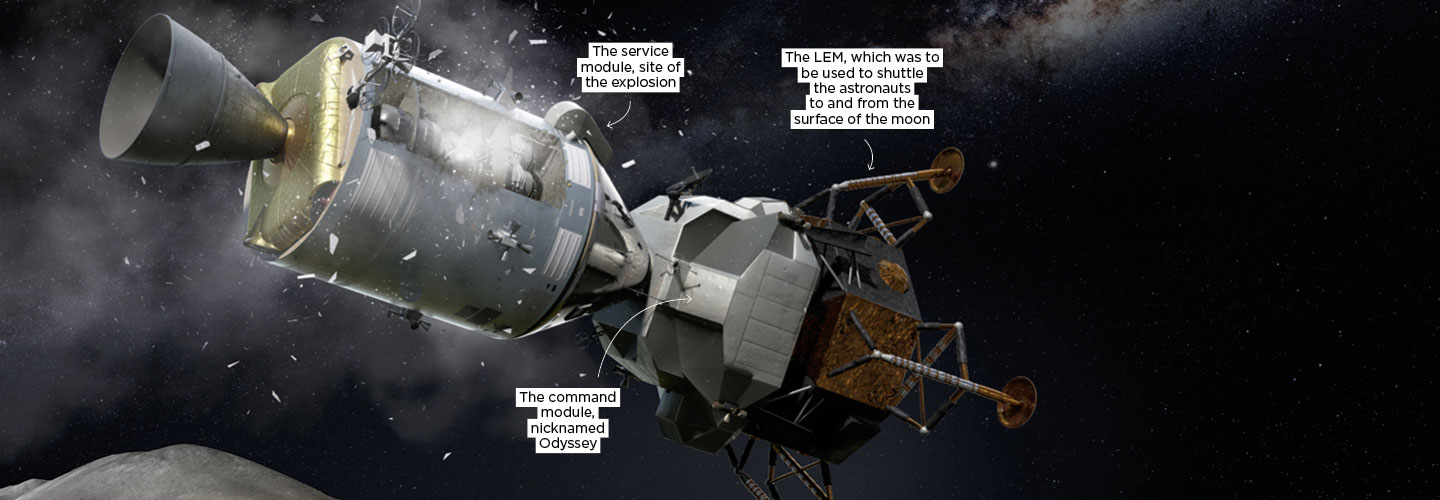The three American astronauts of the Apollo 13 mission were doomed.
That’s how it seemed on April 13, 1970. Commander Jim Lovell and officers Fred Haise and Jack Swigert were speeding through space when suddenly a violent explosion rocked their spacecraft. The blast tore apart one side of their ship. Within minutes, half their oxygen supply had leaked out, and the ship’s power was draining fast. Without power and oxygen, the astronauts would be stranded in space and would soon suffocate.
The three American astronauts of the Apollo 13 mission were doomed.
That is how it seemed on April 13, 1970. Commander Jim Lovell and officers Fred Haise and Jack Swigert were speeding through space. Suddenly, a violent explosion rocked their spacecraft. The blast tore apart one side of their ship. Within minutes, half their oxygen supply had leaked out. The ship’s power was draining fast too. Without power and oxygen, the astronauts would be stranded in space and would soon suffocate.

